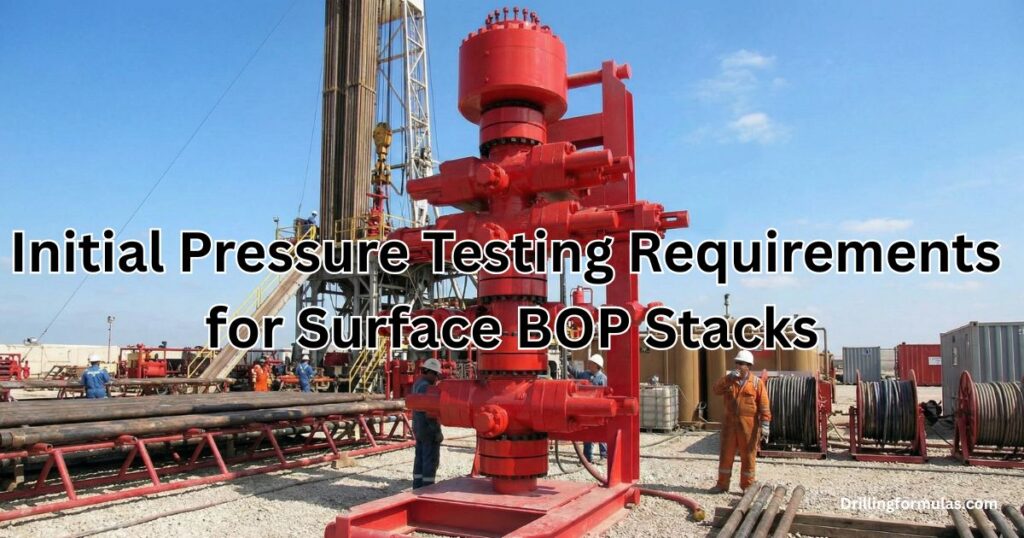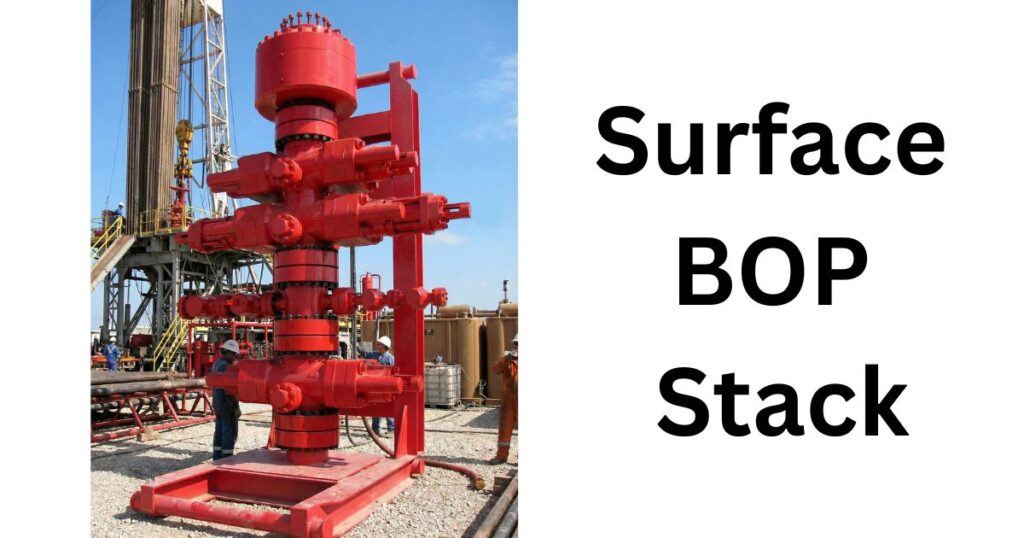This article will describe the initial pressure testing requirements for surface Blowout Preventer (BOP) stack components as outlined in standardized regulatory guidance. The specifications differentiate between low-pressure and high-pressure testing thresholds and incorporate operational conditions such as component replacement, elastomer changes, and system integrity considerations. The intent of these requirements is to ensure functional reliability, containment assurance, and conformity with well control safety practices.
Components to be pressure tested are as follows;
- Annular preventers
- Pipe rams, variable bore rams, blind rams, and blind shear rams
- Choke and kill lines and outlet valves
- Choke manifold (both upstream and downstream)
- Kelly equipment, drill pipe safety valves, and IBOPs
Low-Pressure Testing
All parts of the BOP stack must first be tested at a low pressure of 250 to 350 psi (1.72 to 2.41 MPa).
The purpose of this step is to make sure the equipment seals properly before testing it at higher pressures.
High-Pressure Testing
The high-pressure test depends on whether any parts or sealing materials have been changed.
If parts, ring gaskets or elastomers have been changed
The equipment must be tested to the Rated Working Pressure (RWP) of the component or the wellhead—whichever is lower. For choke manifold at downstream, high pressure test will be RWP of valve(s), line(s), or MASP for the well program,whichever is lower. Additionally, for Kelly equipment, drill pipe safety valves, and IBOPs, they shall be tested to MASP of the well program.
If nothing has been changed
The required high-pressure test may be lower. For example:
- Annular preventers are tested to the Maximum Allowable Surface Pressure (MASP) or 70% of RWP (whichever is lower)
- Ram preventers, choke systems, and outlet valves are tested to the Initial Test Pressure (ITP)
- Kelly and safety valves are tested to Maximum Allowable Surface Pressure (MASP) for the well
- For choke manifold at downstream, high pressure test will be RWP of valve(s), line(s), or MASP for the well program,whichever is lower.
This allows reduced testing when the sealing system is already proven and unchanged.
Additional Notes
During this test:
- The pressure must be held for at least five minutes.
- No leaks should be seen.
- The pressure shall remain stable during the evaluation period. The pressure shall not decrease below the intended test pressure.
Annular and VBR testing
- Must be tested using the largest and smallest OD drill pipe that will be used to drill the well.
Pad drilling movement
- If a rig moves to another nearby well within 21 days, retesting for pressure containing and pressure containing connections are only required if pressure control integrity isbroken.
Surface offshore vs land operations
- For surface offshore operations, ram BOPs shall be tested with ram locks engaged and the closing and locking pressure vented during the initial test.
- For land operations, the same test as surface offshore operation shall be conducted with frequency of once per year.
Adjustable chokes
- They do not need to seal completely.
- They do not need to be tested against a closed choke.
Conclusion
These testing requirements help ensure that BOP systems are safe, reliable, and ready before drilling begins. By following the low-pressure and high-pressure testing steps, and by applying the rules based on equipment condition and operating situation, drilling teams can reduce risks and maintain strong well control.
Referrence – API Standard 53 FIFTH EDITION – Well Control Equipment Systems for Drilling Wells, DECEMBER 2018. REAFFIRMED, MAY 2023








